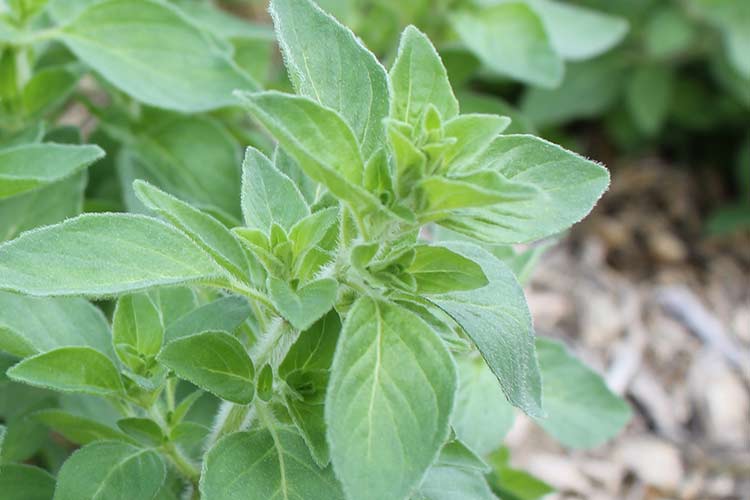With the ever increasing popularity of growing your own herbs, comes an increasing diversity of herbs available to us as home gardeners. Herb plants can be easily purchased from greengrocers, supermarkets, hardware stores, nurseries, markets and even roadside stalls. Often these plants look great but just as often we find their taste is less than exciting.
Poor growing conditions can result in herbs which are lacking in flavour, but more often than not, it is a genetic variation which results in individual plants having widely varying flavours.
Genetic variation is achieved by propagating from seed. Plant breeders use this to great effect by selectively keeping only those seed grown plants which most strongly exhibit the traits they wish to accentuate. Once they have achieved the desired trait in a plant, ongoing propagation is usually by cutting or tissue culture to ensure consistent results. When it comes to herbs, plant characteristics that may be particularly desirable include not just the flavour of the herb but also the size and growth rate of the plant, and how long the plant will last before going to seed.
When propagating by seed, genetic variation will always result. Some plants, and some herbs do not show dramatic variation in qualities this way and relying on seed propagation can be an easy and cost efficient way to propagate these plants. For many annual plants seeds remain fairly true to the parent characteristics, and given their short life cycle seed propagation remains very effective for annual plants. When it comes to culinary herbs, parsley, dill and coriander are all annuals which are easily propagated from seed, and will give reasonably consistent results. Depending on climate they will last from 3 months to two years in a garden before setting seed which can be collected and re-sown for reliable results. These are annual plants that do not have many variations within each species, making it less likely that the new plants will have varied much from the parent plant.
The more varied a type of plant can be (eg basil with lots of different types available) the more likely seed will produce new plants which are not true to characteristics of the parent plant. Seed grown herbs can be highly variable in flavour. If the parent plant is a particularly good plant – well suited to your garden, strong growing and good flavour, then you have a good chance, but no guarantee, that the seed will produce similar qualities in the next generation. Only ever keep and germinate seed produced by healthy plants which are performing well for you. Poor performing plants will produce seed that is likely to also perform poorly.
The only way to guarantee the same qualities in your new generation of plants is to propagate asexually – by tissue culture or cutting.
Plants propagated asexually will be genetically identical to the parent plant, and this is why plant breeders will often use this method to ensure consistent characteristics in the plants they produce.
When it comes to herbs available for purchase, consistency of flavour has not always been given high consideration. This has resulted in plants available for purchase with poor flavour, and often poor growth habits as well. Many gardeners become dispirited when growing herbs with poor flavour and often give up growing their own, which is a shame. The fault is usually not with the gardener but with the poor flavour quality of the plant they purchased.
Oregano, thyme, basil and lemongrass are amongst the herbs with the most highly varying flavours and it is very common to find your plant does not have the flavour you were expecting. These plants have been so often propagated from poor tasting plants that the result is many generations of plants with the same poor flavours. If a crushed leaf of a plant offered for sale does not result in a rich aroma, chances are the plant will not have a lot of flavour.
In the case of lemongrass, the market has suffered with mass production of a different species of lemongrass which has a poorer flavour, but grows easily from seed. If your seedling plant has a reddish tinge to the stems it is the inferior flavoured species.
In the case of basil, the huge wealth of varieties available has resulted in cross pollination between varieties and seed raised plants are often not true to type. Unless growers are careful to ensure each variety is grown in enclosures which are separated to prevent cross pollination, cutting grown plants are the only way to ensure each plant variety is true to type. The Herbs range includes 2 different types of cutting grown Greek basil – Ocimum minimium ‘GB02’ PBR intended with a strong flavour and Ocimum minimum ‘GB01’ PBR intended with a mild flavour.
In the case of oregano, long term propagation from poor flavoured plants has resulted in oregano plants with good flavour being very hard to find. Oregano is a strong flavoured plant and can easily overpower a dish if used in large amounts. A plant with a milder flavour will help avoid this problem however oregano plants with no flavour at all are commonly available for purchase. Marjoram has long been the herb of choice for people who find the full flavour of oregano a little strong.
The desire by some people for a milder flavour has also led to many of the thyme plants available being very mild in flavour, and a rich and full flavoured thyme plant can be hard to find.
The Herbs range includes 4 different types of cutting grown oregano, and 3 different types of cutting grown thyme.
Within the oregano range, Origanum spp. ‘OREG01’ PBR intended has a very mild flavour suitable for salads with flavour getting stronger through the range with Origanum spp. ‘OREG02’ PBR intended and Origanum spp. ‘OREG03’ PBR intended both being full rich flavoured herbs to Origanum spp. ‘OREG04’ PBR intended which has the strongest flavour of the range.
The thyme range begins with Thymus serphyllum ‘WT01’ PBR intended with its mild flavour, followed by Thymus serphyllum ‘WT02’ PBR intended with a medium flavour, and finishing with Thymus serphyllum ‘WT03’ PBR intended, a strong and spicy thyme.
Propagating by cutting (or in the case of lemongrass, by division) from good flavoured plants is the only way to ensure that new plants will have the same great taste as the parent plant. This will apply if you prefer a full strong flavour or a more gentle mild flavour.
By purchasing plants which have been cutting grown from good parent plants, such as the Herbs range, you can be sure that the plant you are purchasing will be true to what the label says – both in terms of the flavour and the growth habit of the plant, and allows you to purchase a plant with a flavour which will suit your preferences.
*Article published by Kate Wall






